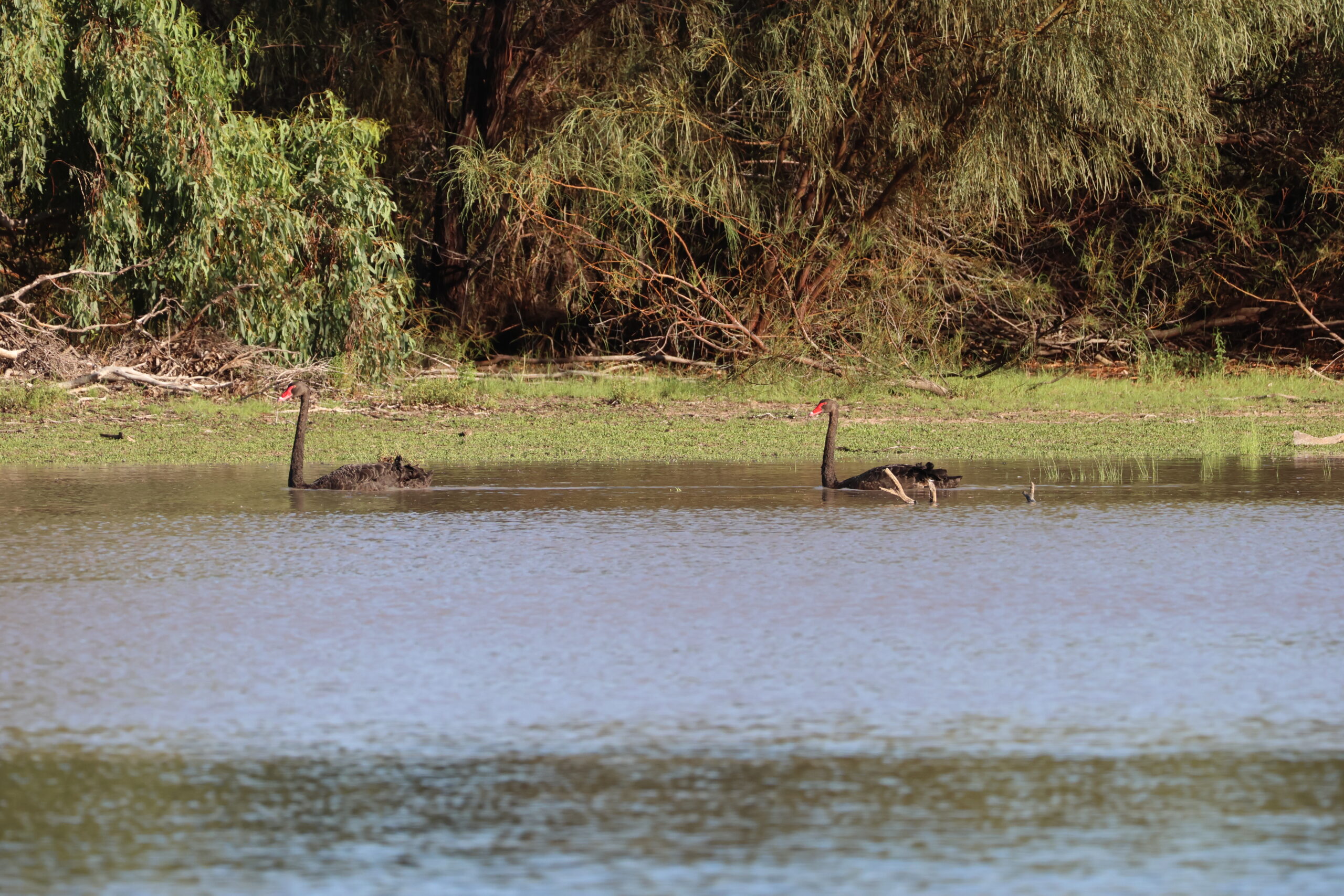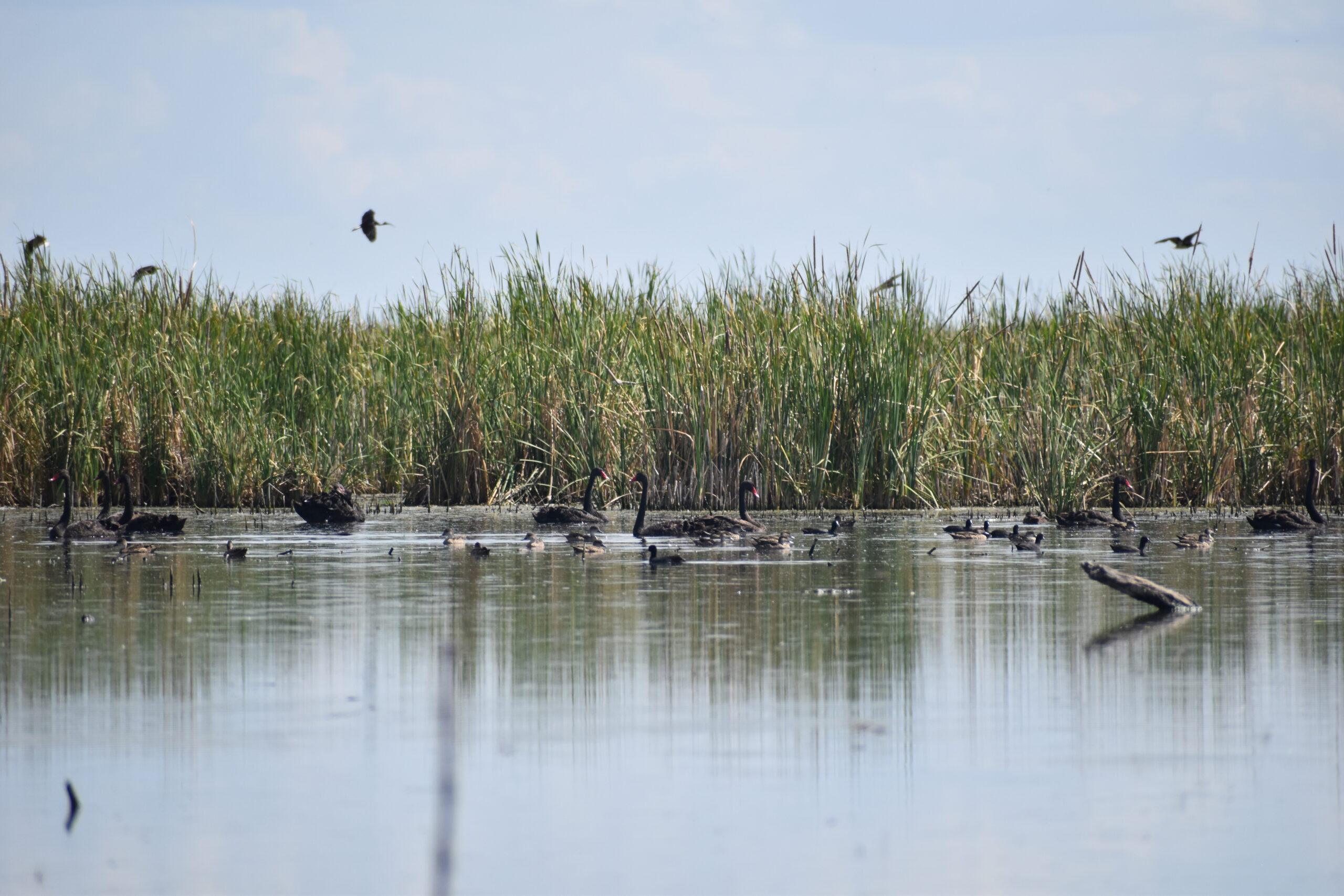The Commonwealth Environmental Water Holder’s (CEWH) Science Program funds the Flow Monitoring, Evaluation and Research (Flow–MER).
We would like to acknowledge the Kurnu-Baakandji People who are the Traditional Owners of the Warriku (Warrego) and Baaka (Darling) Rivers and the Gomeroi People who are the Traditional Owners of the Guwayda (Gwydir) catchment and surrounds. Thank you for sharing your Country and knowledge of the land, water and life with us. We pay respects to Elders past and present.
Traditional Gamilaaraay Language of the Gomeroi Nation used in this article (H. White & B. Duncan – Speaking Our Way, M. Mckemey), additional to learnings from interacting with community members and the Guwayda (Gwydir) River Selected Areas Culture Advisor.
Traditional Paakantyi Language of the Kurnu-Baakandji Nation used in this article. (L. A. Hercus – Paakantyi Dictionary), additional to learnings from interacting with community members and the Junction of the Warriku (Warrego) and Baaka (Darling) Rivers Selected Areas Culture Advisor.
Author Tamara Kermode.

Black swans (Cygnus atratus), known to the Gomeroi people as the barayamal, are the only swan species with black feathers. They can be found throughout Australia, the exception being Cape York Peninsula, and are most common in the south. Their preferred habitat is large salt, brackish or fresh waterways and permanent wetlands.
Black swans, such as the two seen in Figure 1, are paired for life, with both adults raising one brood per season. Nests are made of reeds and grasses, either placed on a small island or floating in deeper water. The chicks, known as cygnets, are covered in grey down for the first few months of life, gaining their signature black feathers as they mature.

Barayamal are commonly recorded within both the Toorale National Park and Conservation Area and the Gwydir State Conservation Area and surrounds. Due to a preference for larger water bodies, we most commonly record swans in areas such as Boera or Booka Dam at Toorale and Goddard’s Lease in the Guwayda Warrambools (Gwydir Wetlands).
Due to the barayamals size, they need large, unobstructed waterways of at least 40 m
to use as a runway for taking off and landing. Although, on occasion they can also be found on smaller dams and sources of water. Barayamal are reliant on shallow water landscapes as they feed on aquatic vegetation, insects, molluscs and small crustaceans. Releases of Commonwealth water for the environment assists in maintaining suitable water levels for swans to feed and breed.
Managing water for the environment is a collective and collaborative effort, working in partnership with communities, private landholders, scientists and government agencies – these contributions are gratefully acknowledged.
We acknowledge the Traditional Owners of the land on which we live, work and play. We also pay our respects to Elders past, present and emerging.

